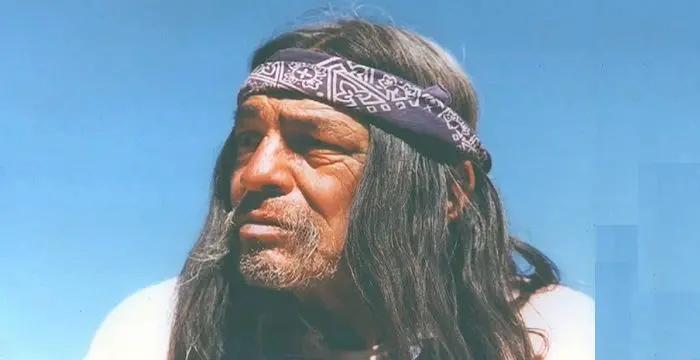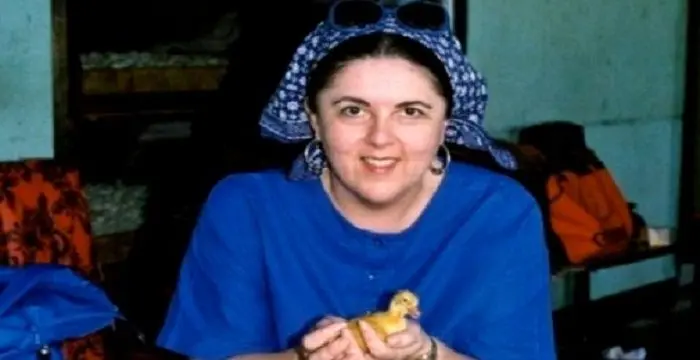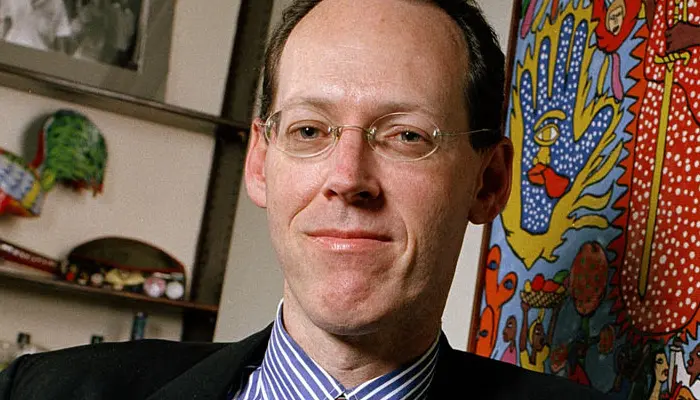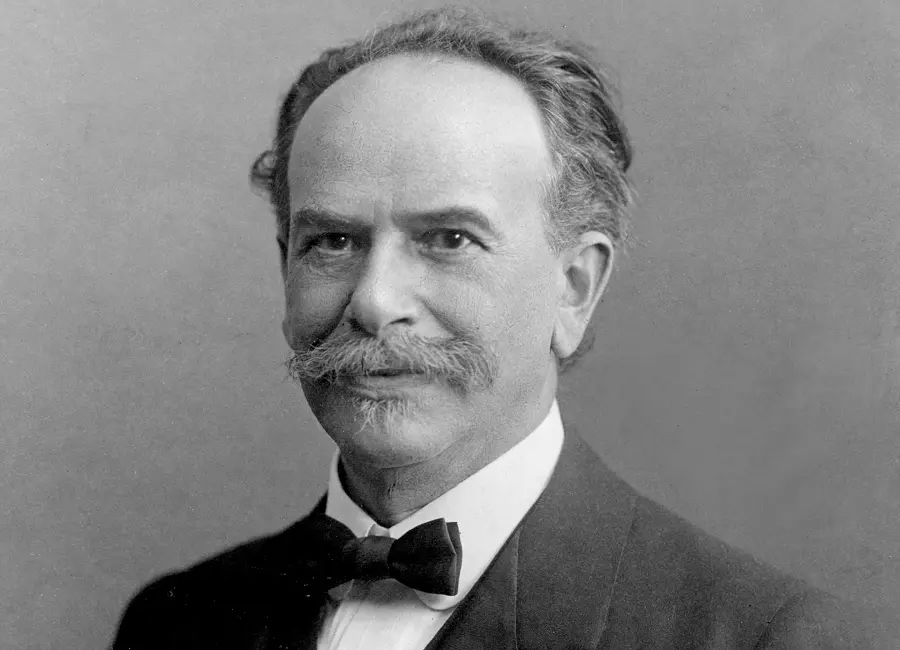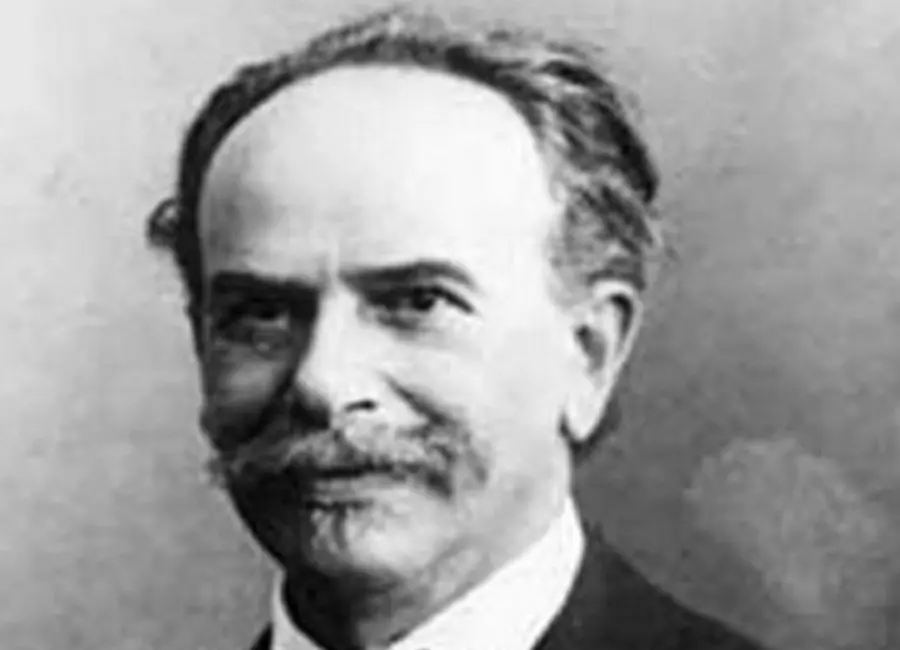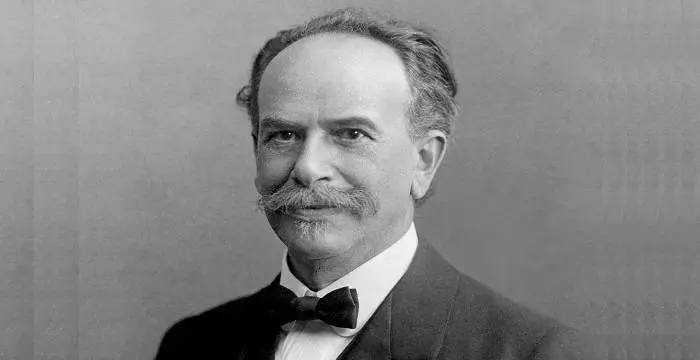
Franz Boas - Miscellaneous, Life Achievements and Life
Franz Boas's Personal Details
Franz Boas was a German-American anthropologist who is known as the ‘pioneer of modern anthropology’
| Information | Detail |
|---|---|
| Birthday | July 9, 1858 |
| Died on | December 21, 1942 |
| Nationality | American |
| Famous | Intellectuals & Academics, Anthropologists, Miscellaneous |
| Birth Place | Minden, Westphalia, Germany |
| Gender | Male |
| Sun Sign | Cancer |
| Born in | Minden, Westphalia, Germany |
| Famous as | Anthropologist |
| Died at Age | 84 |
// Famous Anthropologists
Carlos Castaneda
Carlos Castaneda was an American author who penned ‘The Teachings of Dan Juan’. This biography gives detailed information about his childhood, life, works and timeline.
Ann Dunham
Ann Dunham was an American anthropologist and played a major role in the rural development of Indonesia. This biography profiles her childhood, family, personal life, career, etc.
Paul Farmer
Paul Farmer is an anthropologist and physician who co-founded the health organization - Partners In Health (PIH). This biography of Paul Farmer provides detailed information about his childhood, life, achievements, works & timeline.
Franz Boas's photo
Who is Franz Boas?
Famous as the ‘the Father of Modern Anthropology’, Franz Boas was an important figure in 20thy century anthropology. He played a key role in organising the American Anthropological Association and made contributions in the field of physical anthropology, linguistics, archaeology, as well as cultural anthropology. He argued against the theories that distinguished people on the basis of race and discredited the belief that western civilisation is superior to the other societies. He was also a prolific writer; some of his well-known books in the field of anthropology include ‘The Mind of Primitive Man’, ’Anthropology and Modern Life’ and ‘Kwakiutl Ethnography’. Throughout his life he spoke out against racism and advocated the need for intellectual freedom and worked to protect German and Austrian scientists who fled from the Nazi regime. He was responsible for establishing folklore as a field of study in anthropology and also made a major contribution to the field of linguistics. To him goes the credit of establishing it as a science in America. He continues to influence many scholars and researchers in all the fields of anthropology.
// Famous Intellectuals & Academics
Bertil Gotthard Ohlin
Bertil Gotthard Ohlin was a famous Swedish economist. This biography profiles his childhood, family life & achievements.
Emily Greene Balch
Emily Greene Balch was an American economist, sociologist and pacifist who won the 1946 Nobel Peace Prize. This biography of Emily Greene Balch provides detailed information about her childhood, life, achievements, works & timeline.
Martin Buber
One of the greatest philosophers to have ever walked on earth, Martin Buber contributions to philosophy is a long-standing one. Explore all about his profile, childhood, life and timeline here.
Childhood & Early Life
Franz Uri Boas was born in Minden, Westphalia, Germany, into a Jewish family. His parents were well-educated, liberal and socialized among the elite members of German society.
From an early age, his parents encouraged him to think independently and pursue his interests.
He exhibited a keen interest in nature and natural sciences from the age of 5 and studied natural history and the geographic distribution of planets at school.
He attended the University of Heidelberg for a brief period of time after which he attended the University of Kiel, where he earned a Ph.D. in Physics and a minor in Geography.
Career
In 1883, he went on a scientific mission to Baffin Islands, Canada, where he studied the ‘Inuit’ culture, collected ethnographic data and became interested in life of the people on the island.
In 1885, he worked with Rudolf Virchow (physical anthropologist) and Adolf Bastian (ethnologist) at the Royal Ethnological Museum, Berlin and also taught geography at the University of Berlin.
In 1887, he went to New York City and took up the post of an assistant editor for a ‘Science’ magazine and also taught anthropology at the Clark University, in Worcester, Massachusetts.
In 1888, his first monograph ‘The Central Eskimo’, an account of the ‘domestic occupation and amusements’ of the people in Baffin Islands, was published in the 6th Annual Report in the Bureau of American Ethnology.
In 1889, he was appointed as the head of the Department of Anthropology at Clark University, after which he went on a series of scientific expeditions to illuminate ‘Asaistic-American relations’.
In 1892, he resigned from his post at Clark University on the grounds of alleged ‘infringement on academic freedom’ and worked as the chief assistant in anthropology to F.W. Putnam at the Chicago World’s Fair.
In 1896, he worked under the guidance of F.W Putnam as an assistant curator at the American Museum of Natural History. That year, he also gave lectures on anthropology at Columbia University.
In 1897, he argued that the ‘Kwakiutl’, a tribe of the indigenous people centred in British Columbia, were learning about ‘matrilineal cultures’ from their neighbours in the northern region of Columbia.
In 1899, he was promoted to the post of professor of anthropology at the Columbia University and was appointed as the head of the Ph.D. program in anthropology.
He organised the ‘Jesup North Pacific Expedition’, a five year study of the native people from the Pacific Northwest.
In order to extend his theories on the ‘Kwakiutl’, he invited fourteen Kwakiutl tribals to come and live in a mock village in order to study their culture and observe their behaviour.
In 1903, he authored the essay ‘Decorative Designs of Alaskan Needlecases: A History of Conventional Designs, Based on Materials in a U.S. Museum’, which served as an example of how he used empirical data and research methods to formulate his theories on anthropological studies.
In 1907, he authored an essay titled ‘Anthropology’, in which he highlighted the issues of ‘Why are the tribes and nations of the world different, and how have the present differences developed?’
In 1908, he became the editor of ‘Journal of American Folklore’ and became the most influential figure in the establishment of folklore as a discipline of study in the field of anthropology in America.
In 1911, ‘The Mind of Primitive Man’, a collection of his lectures on culture and race, was published. The publication was a reflection of his thoughts on ‘cultural relativism’.
Major Work
His 1911 publication ‘The Mind of Primitive Man’ is one of his seminal works which is considered an important work in cultural anthropology and cultural relativism. This book laid the foundation for further studies on anthropology and is used for academic purposes.
Awards & Achievements
In 1900, he was elected to the National Academy of Sciences, United States.
In 1901, he was appointed as the honorary Philologist of the Bureau of American Ethnology.
In 1910, he was elected as the President of the International Journal of American Linguistics.
In 1931, he was elected as the president of the American Association for the Advancement of Science.
In 1936, he was honoured as the ‘emeritus in residence’ at Columbia University, New York.
Personal Life & Legacy
In 1887, he married Marie Krackowizer in New York. The couple had six children together.
He died at the age of 84 after he suffered a major stroke at the Columbia University Faculty Club, New York.
// Famous Miscellaneous
Jason Simpson
Jason Simpson is the son of former NFL running back, broadcaster and actor O. J. Simpson. Check out this biography to know about his childhood, family, life, and little known facts about him.
Melissa Brim
Melissa Brim is the ex-girlfriend of former professional boxer Floyd Mayweather Jr. Check out this biography to know about her birthday, childhood, family life, achievements and fun facts about her.
Joyce Meyer
Joyce Meyer is a Christian author and speaker. This biography provides detailed information about her childhood, life, achievements, works & timeline
Franz Boas biography timelines
- // 9th Jul 1858Franz Uri Boas was born in Minden, Westphalia, Germany, into a Jewish family. His parents were well-educated, liberal and socialized among the elite members of German society.
- // 1883In 1883, he went on a scientific mission to Baffin Islands, Canada, where he studied the ‘Inuit’ culture, collected ethnographic data and became interested in life of the people on the island.
- // 1885In 1885, he worked with Rudolf Virchow (physical anthropologist) and Adolf Bastian (ethnologist) at the Royal Ethnological Museum, Berlin and also taught geography at the University of Berlin.
- // 1887In 1887, he went to New York City and took up the post of an assistant editor for a ‘Science’ magazine and also taught anthropology at the Clark University, in Worcester, Massachusetts.
- // 1887In 1887, he married Marie Krackowizer in New York. The couple had six children together.
- // 1888In 1888, his first monograph ‘The Central Eskimo’, an account of the ‘domestic occupation and amusements’ of the people in Baffin Islands, was published in the 6th Annual Report in the Bureau of American Ethnology.
- // 1889In 1889, he was appointed as the head of the Department of Anthropology at Clark University, after which he went on a series of scientific expeditions to illuminate ‘Asaistic-American relations’.
- // 1892In 1892, he resigned from his post at Clark University on the grounds of alleged ‘infringement on academic freedom’ and worked as the chief assistant in anthropology to F.W. Putnam at the Chicago World’s Fair.
- // 1896In 1896, he worked under the guidance of F.W Putnam as an assistant curator at the American Museum of Natural History. That year, he also gave lectures on anthropology at Columbia University.
- // 1897In 1897, he argued that the ‘Kwakiutl’, a tribe of the indigenous people centred in British Columbia, were learning about ‘matrilineal cultures’ from their neighbours in the northern region of Columbia.
- // 1899In 1899, he was promoted to the post of professor of anthropology at the Columbia University and was appointed as the head of the Ph.D. program in anthropology.
- // 1900In 1900, he was elected to the National Academy of Sciences, United States.
- // 1901In 1901, he was appointed as the honorary Philologist of the Bureau of American Ethnology.
- // 1903In 1903, he authored the essay ‘Decorative Designs of Alaskan Needlecases: A History of Conventional Designs, Based on Materials in a U.S. Museum’, which served as an example of how he used empirical data and research methods to formulate his theories on anthropological studies.
- // 1907In 1907, he authored an essay titled ‘Anthropology’, in which he highlighted the issues of ‘Why are the tribes and nations of the world different, and how have the present differences developed?’
- // 1908In 1908, he became the editor of ‘Journal of American Folklore’ and became the most influential figure in the establishment of folklore as a discipline of study in the field of anthropology in America.
- // 1910In 1910, he was elected as the President of the International Journal of American Linguistics.
- // 1911In 1911, ‘The Mind of Primitive Man’, a collection of his lectures on culture and race, was published. The publication was a reflection of his thoughts on ‘cultural relativism’.
- // 1911His 1911 publication ‘The Mind of Primitive Man’ is one of his seminal works which is considered an important work in cultural anthropology and cultural relativism. This book laid the foundation for further studies on anthropology and is used for academic purposes.
- // 1931In 1931, he was elected as the president of the American Association for the Advancement of Science.
- // 1936In 1936, he was honoured as the ‘emeritus in residence’ at Columbia University, New York.
- // 21st Dec 1942He died at the age of 84 after he suffered a major stroke at the Columbia University Faculty Club, New York.
// Famous American peoples
Wentworth Miller
Wentworth Miller is an American actor and screenwriter who achieved recognition for his role in the TV series ‘Prison Break’.
Jason Simpson
Jason Simpson is the son of former NFL running back, broadcaster and actor O. J. Simpson. Check out this biography to know about his childhood, family, life, and little known facts about him.
Melissa Brim
Melissa Brim is the ex-girlfriend of former professional boxer Floyd Mayweather Jr. Check out this biography to know about her birthday, childhood, family life, achievements and fun facts about her.
Skai Jackson
Skai Jackson is an American child actress with huge fan following. Find more about her family & personal life, relationships, facts and more.
Joyce Meyer
Joyce Meyer is a Christian author and speaker. This biography provides detailed information about her childhood, life, achievements, works & timeline
Zoe LaVerne
Zoe LaVerne is an American musical.ly star. Check out this biography to know more about her family, personal life, including her age, birthday, etc.
Franz Boas's FAQ
What is Franz Boas birthday?
Franz Boas was born at 1858-07-09
When was Franz Boas died?
Franz Boas was died at 1942-12-21
Which age was Franz Boas died?
Franz Boas was died at age 84
Where is Franz Boas's birth place?
Franz Boas was born in Minden, Westphalia, Germany
What is Franz Boas nationalities?
Franz Boas's nationalities is American
What is Franz Boas's sun sign?
Franz Boas is Cancer
How famous is Franz Boas?
Franz Boas is famouse as Anthropologist
